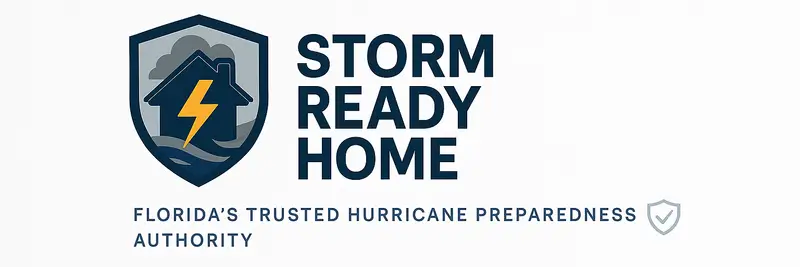
Your Step-by-Step Guide to Staying Safe, Ready, and Powered During Storm Season
This guide is my complete Florida Hurricane Preparedness Plan, built from years of real experience, real storms, and real recovery lessons. If you live in Florida, you already know: it’s not a matter of if it’s when.
I built this Florida Hurricane Preparedness Plan not from theory but from real-world storms, trial and error, and lessons passed down from Floridians who’ve been through it all.
hurricane season is not just something you hear about on the news. It is part of our life, our calendar, and our mindset for half the year. Every June through November, I keep one eye on the weather and the other on my hurricane prep checklist. I have learned the hard way that waiting is not an option.
This Florida Hurricane Preparedness Plan is based on real experiences and lessons I have learned from past storms. It is not copied from a national site or loaded with vague advice. Instead, it is a complete, Florida-specific action plan. You will find what actually works for protecting your home, securing power, prepping supplies, and staying ahead of the curve when things get serious.
My goal with this guide is simple: help you avoid panic, avoid last-minute store runs, and feel confident that your family is safe and ready. I update this every year with the latest tools, smarter timelines, and honest gear recommendations. If you are ready to take control this season, you are in the right place.
Why Florida Hurricane Preparedness Plans Must Address Unique Storm Risks
As someone who lives in Florida and has experienced more storms than I can count, I can tell you this state is in a class of its own when it comes to hurricanes. We do not just get more storms than other places. We get them faster, stronger, and often with less warning.
Florida has been hit by over 120 hurricanes since record-keeping began. That is more than any other U.S. state. We are surrounded by warm ocean water on three sides, making us the top landing zone for both Atlantic and Gulf storms. Meteorologists often watch Florida first when tracking any system.
Storm surge is one of our biggest threats. If you are near the coast, water levels can rise fast, not just by inches, but by several feet. I have seen neighborhoods disappear under 10 feet of water. When you combine that with high winds, widespread flooding, and long power outages, the risk goes far beyond property damage. It becomes a matter of personal safety.
This preparedness plan is built specifically for those risks. Whether you live in a coastal high-rise, a suburban home, or a rural inland area, Florida storms will affect you. The key is to take action before things escalate. If you prepare now, you will not have to scramble later. This isn’t theory it’s how my Florida Hurricane Preparedness Plan has protected my family time and again.
What I Do Before Hurricane Season Starts
Once spring rolls around, I do not wait for June to start preparing. Florida hurricane season officially runs from June 1 through November 30, but every year I treat May as my prep month. That gives me time to check everything without the pressure of an approaching storm.
The first thing I do is check my insurance. If your current policy does not include flood coverage, now is the time to fix that. Keep in mind, most new flood policies take 30 days to activate. I also take new photos and videos of everything inside and outside my home. It sounds simple, but that visual record can save hours during a claim.
I review and update my family’s emergency plan. Who we contact, where we evacuate, how we’ll stay in touch all of it goes in a printed and digital format. If a storm knocks out power or cell service, I want those details written down and easy to find. This step is the heart of my Florida Hurricane Preparedness Plan.
I also start checking supply levels. Batteries, flashlights, fuel, and medical essentials go on a running checklist. I slowly restock these items during sales or Florida’s tax-free holiday to avoid last-minute store chaos.
Florida Hurricane Preparedness Plan: What I Pack in My Emergency Kit
My emergency kit is not fancy, but it is complete. Over the years, I’ve refined it based on what I actually used during past storms. Below is a quick overview of the essentials I keep ready and packed in waterproof bins, tote bags, and clear containers.
- Water: One gallon per person per day for at least seven days (not the old three-day rule).
- Food: Non-perishable items like canned goods, protein bars, peanut butter, and electrolyte drinks.
- First Aid Kit: Bandages, antiseptics, scissors, gloves, pain relief meds, and extra prescriptions.
- Flashlights & Lanterns: Battery-powered or rechargeable, with extra sets of batteries in a separate zip bag.
- Portable Phone Chargers: Solar or battery-powered units with enough output to recharge devices multiple times.
- Important Documents: Copies of insurance, ID, health records, and contacts sealed in a waterproof pouch.
- Cash: Small bills in a separate pouch. I learned this one the hard way when ATMs went offline for days.
- Pet Supplies: Leash, food, medical records, and a crate if needed. I always pack as if my dog is evacuating with us.
I check this kit at least twice a year before the season starts and again after any major weather system passes. Having a complete, tested emergency kit is the backbone of my Florida Hurricane Preparedness Plan. If you want to see exactly what gear I use, check out my full Florida Hurricane Emergency Kit page where I break everything down by type, brand, and use case.
Why Backup Power Is Essential to Any Florida Hurricane Preparedness Plan
One of the first things to fail during any hurricane in Florida is the power grid. I’ve seen transformers spark, substations flood, and entire neighborhoods go dark for days. After Hurricane Ian, we were without power for over 72 hours, and that was considered “fast” by local standards. Trust me having backup power isn’t optional here. It is essential.
My first priority is keeping the fridge and freezer running. After that, I want my phone charged, a few fans blowing, and the Wi-Fi alive if possible. That’s why I rely on solar generators. They’re clean, quiet, and most importantly, safe to use indoors. Power independence is a critical piece of my Florida Hurricane Preparedness Plan.
I’ve tested several models over the years and found that having at least one portable solar generator makes a huge difference. Whether you’re staying home or evacuating, these units give you power independence without the risk of fumes or fuel shortages.
I’ll compare my top three recommendations in the next section so you can choose the one that fits your home, your budget, and your storm plan.
Solar Generator Showdown: Jackery vs BLUETTI vs EF ECOFLOW
I’ve tested several backup power options over the years, and for Florida storms, you need something that is portable, powerful, and reliable. Gas generators work, but they come with noise, fumes, and safety concerns. That’s why I rely on solar generators. Below is a side-by-side comparison of the top three models I recommend.
| Model | Battery Capacity | Output Ports | Solar Input | Weight | Why I Recommend It |
|---|---|---|---|---|---|
| Jackery Explorer 1000 Pro | 1,002 Wh | 3 AC, 2 USB-C, 1 DC car | 800W Max | 25.4 lbs | Lightweight and powerful. Ideal for most essential home needs. |
| BLUETTI EB3A | 268 Wh | 2 AC, 1 USB-C, 2 USB-A | 200W Max | 10.1 lbs | Best compact option for mobile users, small devices, and go-bags. |
| EF ECOFLOW Delta Pro | 3,600 Wh | 6 AC, 2 USB-C, 4 USB-A | 1,600W Max | 99 lbs | Top-tier choice for full-home backup, heavy appliances, or medical gear. |
I rely on the Jackery 1000 Pro for its versatility, quick recharge time, and weight. If you need backup power but don’t want to mess with gas or fumes, this generator is a solid, clean-energy solution. And for larger needs, the EcoFlow Delta Pro is hands-down the most capable unit on the market.
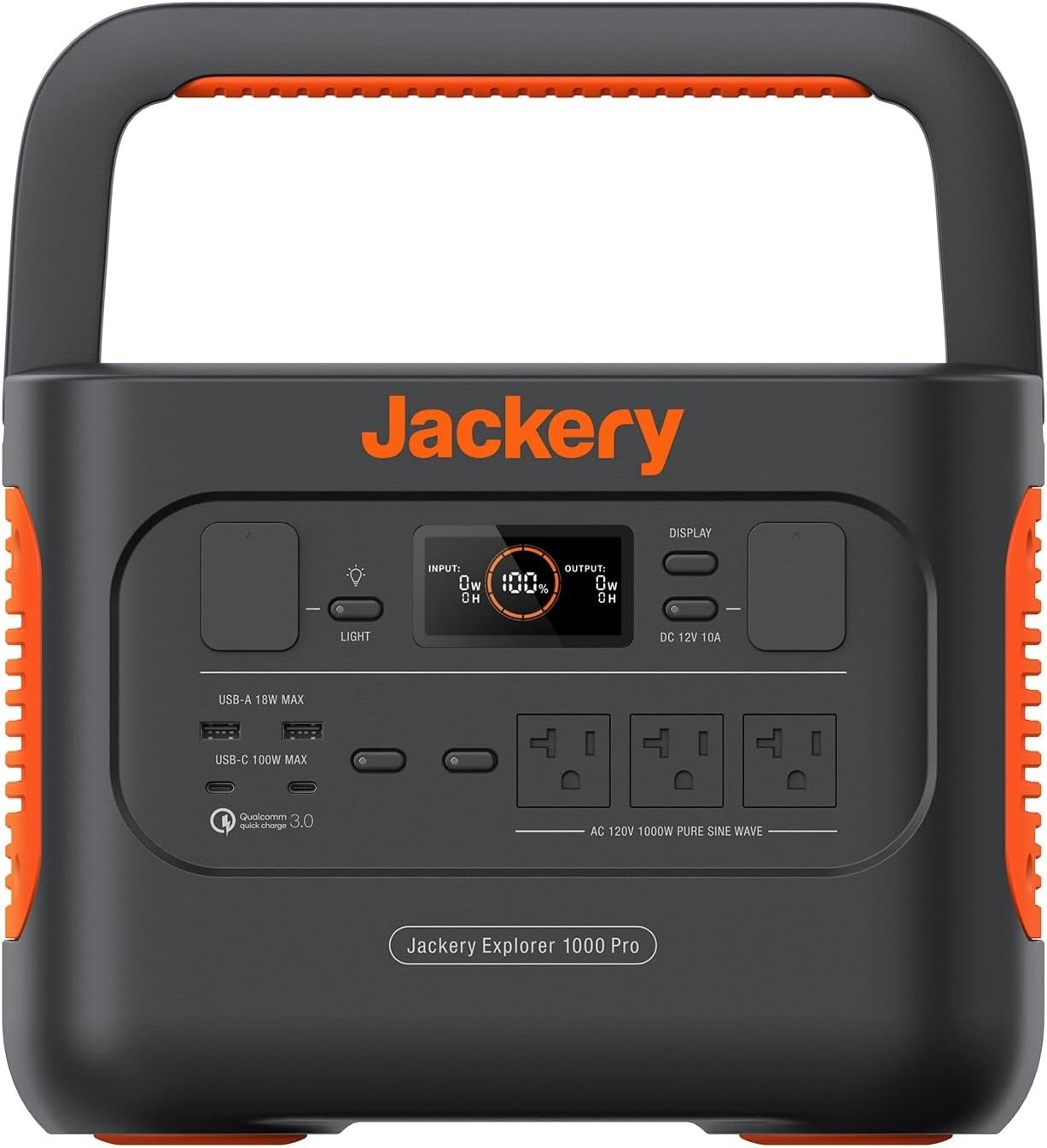
Jackery Explorer 1000 Pro – Solar Generator
- 1002Wh Power: Dual 100W PD ports, 1.8hr full solar charge
- Compact: Foldable handle, LED display, 8 output ports
- Safe & Quiet: Pure sine wave, BMS system, 46dB noise
- Warranty: 6-month Amazon Renewed coverage
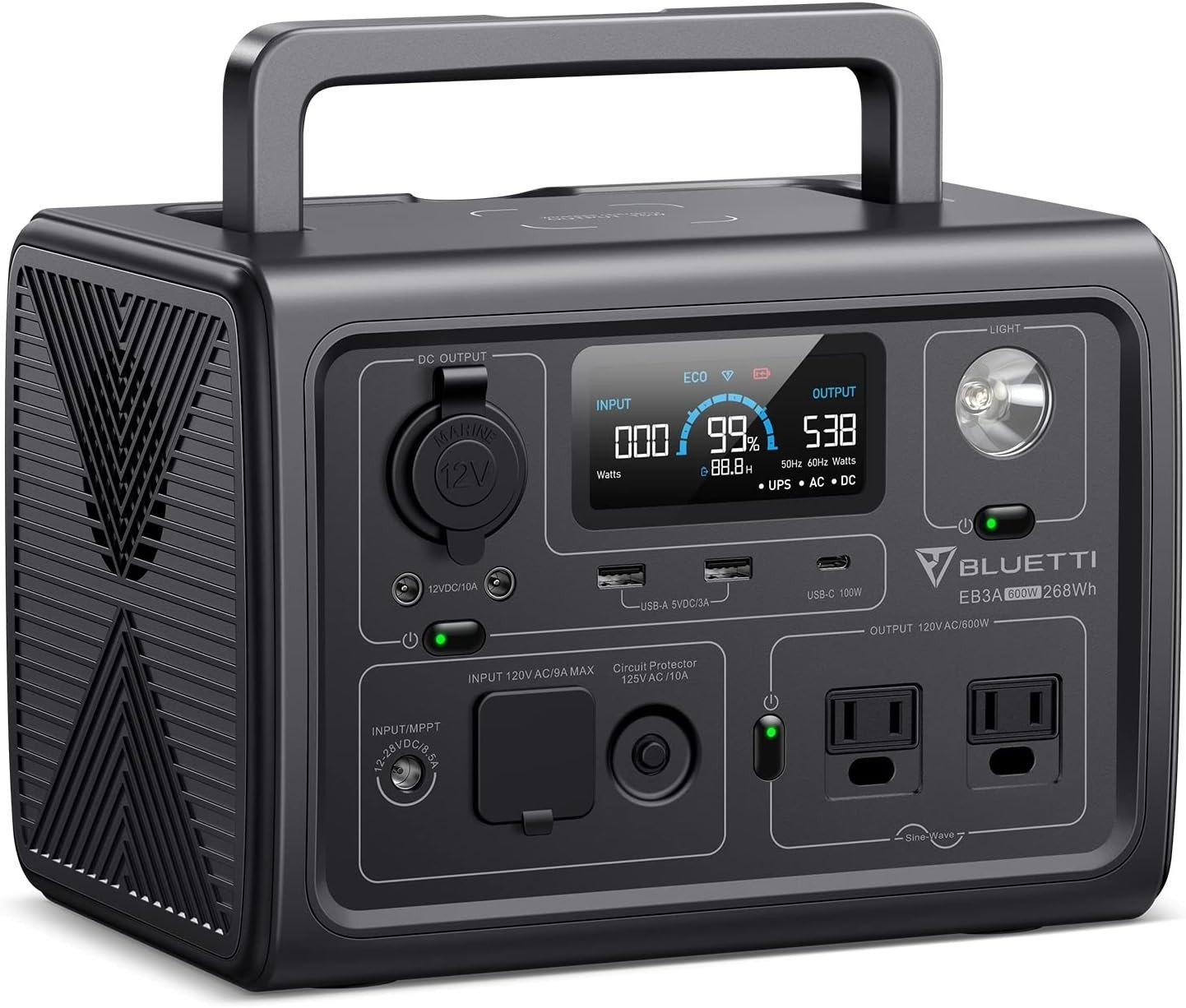
BLUETTI EB3A Solar Generator – 268Wh LiFePO₄
- 268Wh LiFePO₄ Battery: Fast recharge, 2,500+ cycles
- Compact & Powerful: 600W output, 1200W surge, 9 outlets
- Solar Ready: Up to 200W solar input (MPPT controller)
- UPS Mode: Instant switchover for backup power
- What’s Included: EB3A unit, AC cable, solar cable, manual
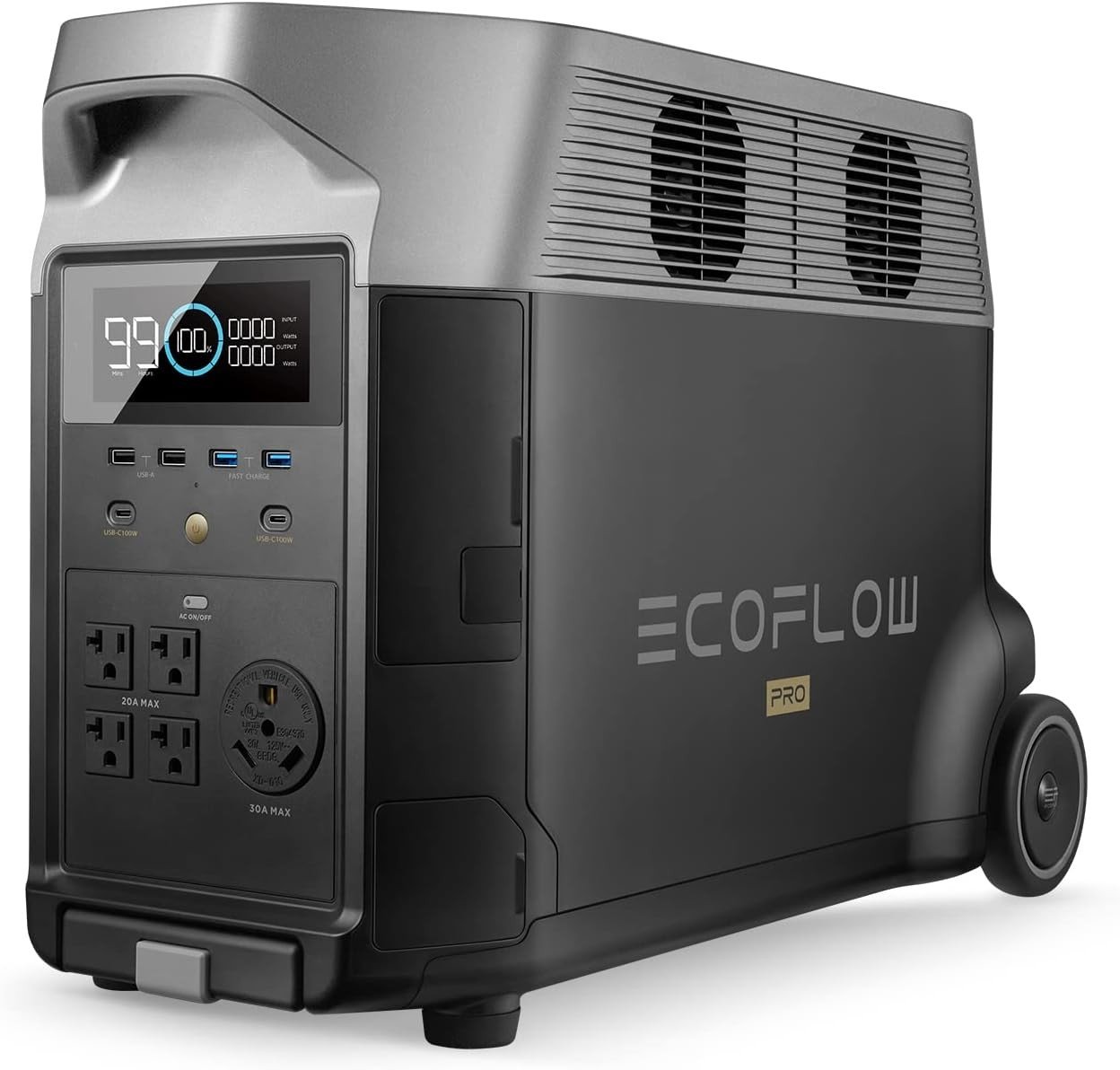
EF ECOFLOW DELTA Pro – 3600Wh Power Station
- Massive Capacity: 3600Wh LiFePO₄ battery powers homes and heavy-duty devices
- X-Boost Output: 3600W standard, up to 4500W with X-Boost
- Charge Anywhere: AC wall, solar, EV charger, generator, or car
- Smart App Control: Monitor power, charging, usage from your phone
- Expandable: Scale up to 25kWh with extra batteries/generators
How I Hurricane-Proof My Home as Part of My Florida Hurricane Preparedness Plan
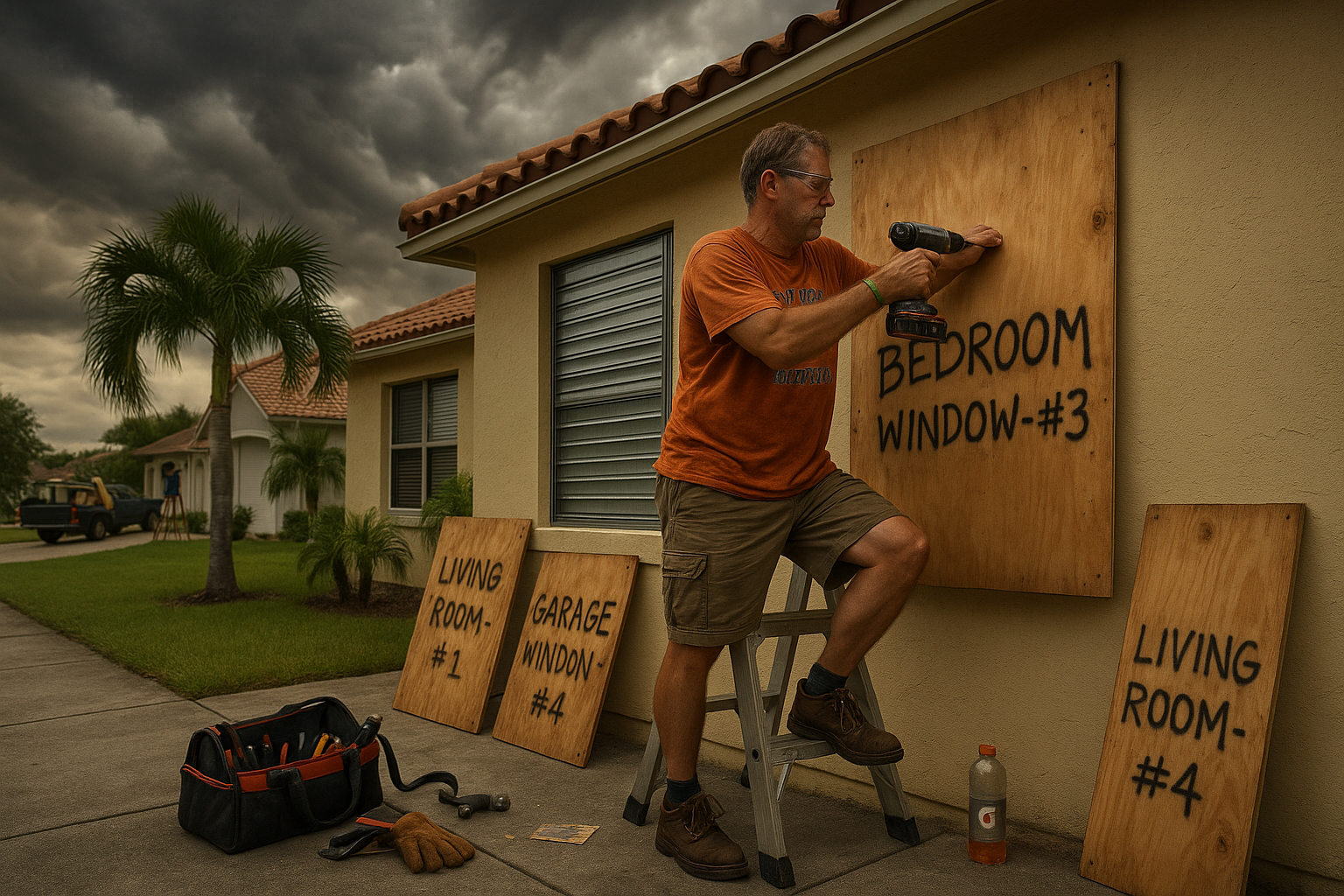
Your home is your shelter, and in a storm, it becomes your shield. I always start with the outside because that’s where the most damage can come from. The moment a hurricane watch is issued, I begin clearing the yard. Outdoor furniture, flowerpots, wind chimes it all gets moved inside. If it’s not bolted down, it becomes a projectile.
I inspect and secure my windows, even if I have shutters. I’ve learned to double-check all locks and fasteners, and I never wait until the last minute to test them. If you’re using plywood, make sure it’s pre-cut and labeled for each window. I keep mine stored in my garage, along with the hardware I need.
Roof prep matters too. I walk the perimeter and look for lifted shingles, clogged gutters, or anything loose on the roof. Water damage adds up fast, and you’ll want every drainage point working properly. I also trim tree branches back away from the house at least 48 hours ahead of the storm.
Inside the home, I make sure all electronics are on surge protectors. I move valuables up to higher ground (just in case of flooding), and I do a quick video walkthrough for insurance documentation. All doors, including garage doors, are reinforced or locked down. All of these home prep steps are foundational parts of my Florida Hurricane Preparedness Plan.
My Personal Countdown Timeline: 1 Week to 1 Hour Before Landfall
Timing is everything during hurricane season. I follow this timeline every time a storm is approaching. It’s helped me avoid panic, long lines, and last-minute mistakes. If you want a smoother ride through the chaos, use this as your guide.
- 7 Days Out (Monitoring Stage): I start checking forecasts daily. This is when I test all my backup power, make sure I have fuel, and review our evacuation plan.
- 5 Days Out: If the storm path still looks serious, I begin minor home prep trimming trees, testing shutters, updating my emergency kit, and checking prescriptions.
- 3 Days Out: I finalize supply runs: food, water, batteries, and cash. This is also when I notify friends or family about possible travel or relocation plans.
- 2 Days Out: Yard is cleared. Windows are secured. Vehicles are fueled up. I charge all battery banks and solar generators. House walkthrough is complete.
- 1 Day Out: I lower the AC to keep the house cool during the likely outage. I freeze extra water bottles. Any pets are prepped for shelter or travel.
- 12 Hours Out: I go into lockdown mode. Final weather updates, radios ready, fridge set to coldest setting, and everything plugged into surge strips. I stop checking social media and start focusing on safety.
Having this countdown laid out helps me take logical, confident action without second-guessing. I always encourage others to adopt this habit it builds mental preparedness as much as physical. It’s one of the most practical elements in my entire Florida Hurricane Preparedness Plan.
When I Decide to Evacuate and Where I Go
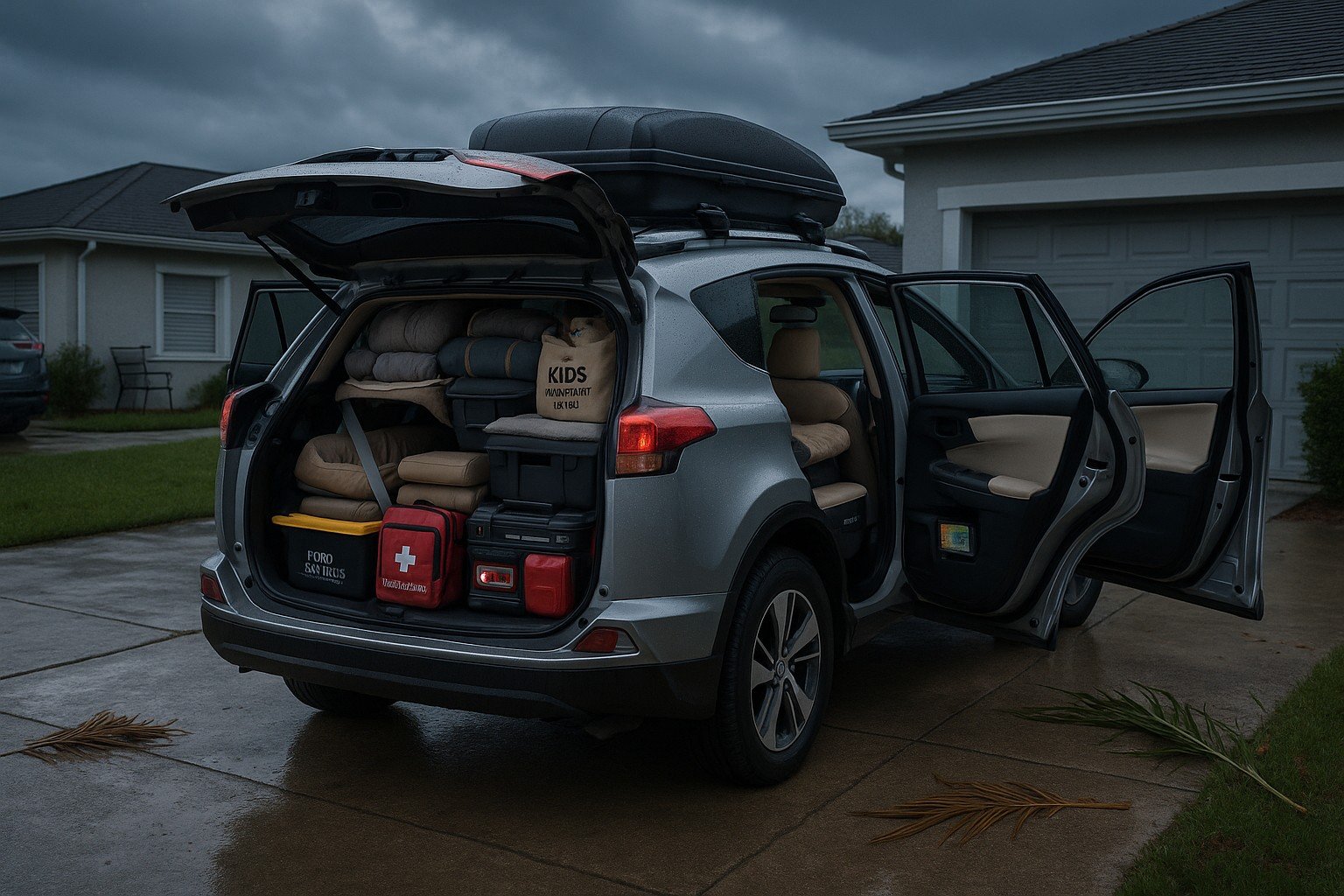
Evacuation isn’t just about danger. It’s about logistics. I don’t wait for an official order if I see a Category 3 or higher storm heading toward us with a wide cone. My golden rule is simple: If I’m even questioning whether to leave, that’s usually my sign to go.
I keep a list of approved evacuation zones and storm shelter addresses in my glove box and printed in my home binder. I also use the Florida Disaster Zone Lookup to double-check my location any time there’s a major update.
A good Florida Hurricane Preparedness Plan always includes multiple evacuation routes, pet accommodations, and safe lodging options ready to go before the first warning.
My evacuation go-to is a family member about two counties inland, but I always have a backup hotel bookmarked on my phone with flexible check-in. I look for pet-friendly spots with generators or backup power, since we travel with our dog.
I fill up the car as early as possible and pack our go-bags with clothes, food, water, chargers, documents, and basic toiletries. If you’re staying on the coast or in a mobile home, don’t wait too long traffic backs up fast, and motels fill up within hours. That decision-making process is a key part of my Florida Hurricane Preparedness Plan.
My Communication Plan: Staying Connected When the Grid Goes Down
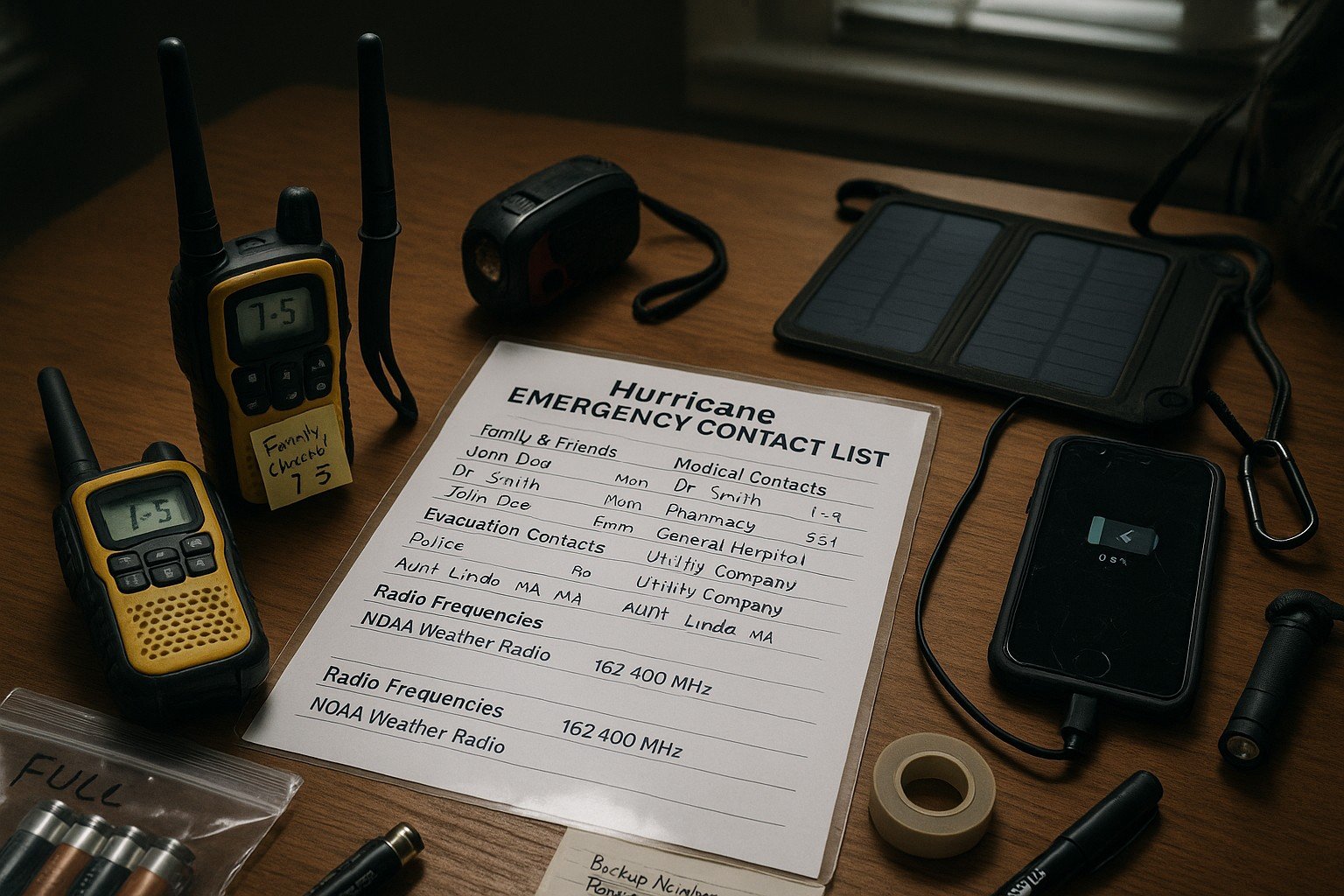
After Hurricane Irma, we lost cell service for three days. Since then, I’ve made it a priority to plan for zero connectivity. My communication strategy includes both online and offline tools and yes, it works without Wi-Fi or cell towers.
I use a written contact sheet with emergency numbers, insurance info, medical contacts, and family addresses. Each member of the household has a copy in their go-bag. We also keep one taped to the inside of a kitchen cabinet in a waterproof sleeve.
For power outages, I keep two solar-powered battery packs and a small crank radio with a USB output. These have saved us more than once. I also register my number for emergency alerts with both the FEMA Wireless Alert System and our county’s emergency notification service.
If cell networks are down, we use walkie-talkies (with 30+ mile range) to stay in touch locally. I store the charging cables for these right inside the pack they came in so I can always find them quickly. Reliable communication is one of the most overlooked parts of a Florida Hurricane Preparedness Plan, but I never skip it.
What I Do Immediately After the Storm Passes
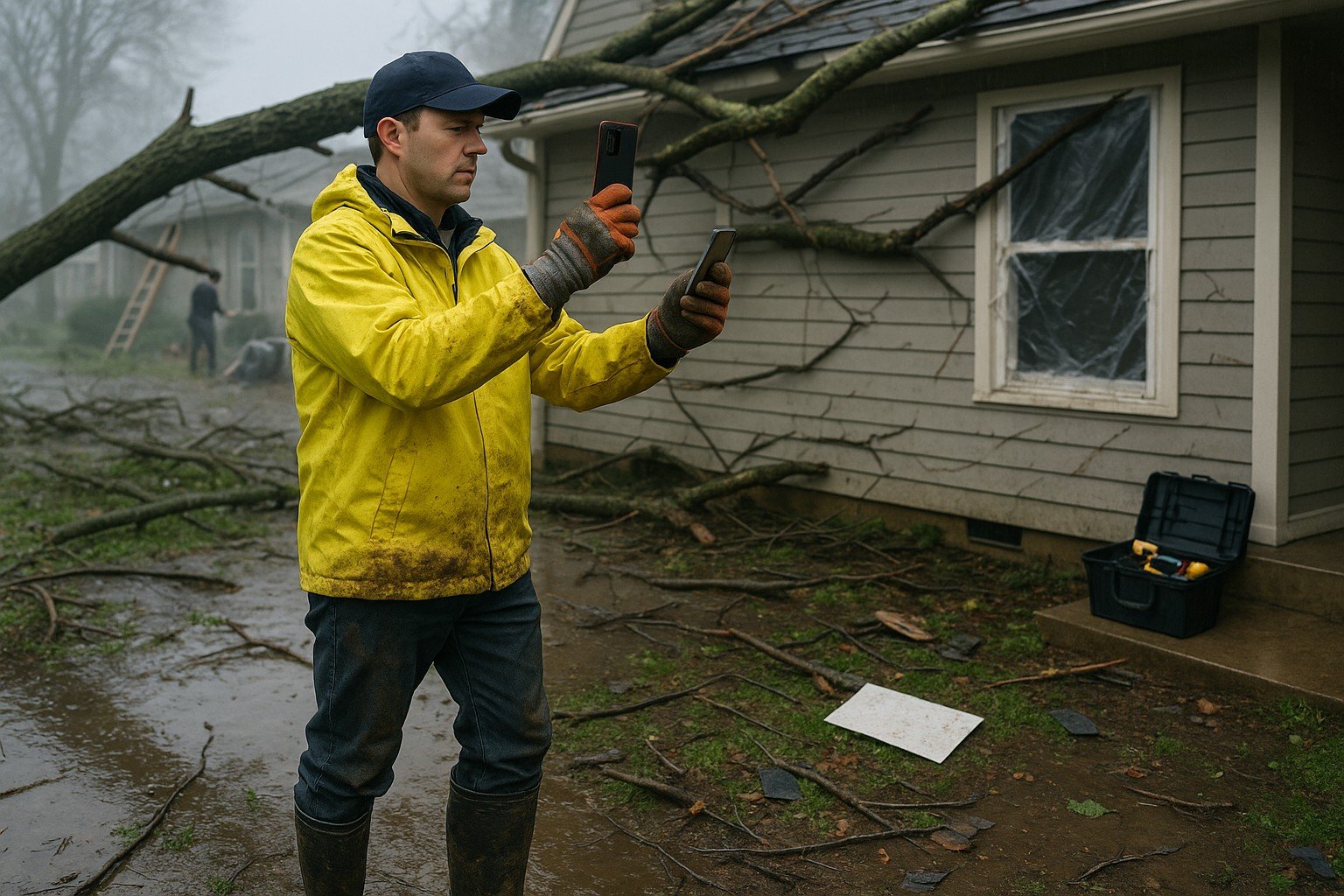
Just because the winds have died down doesn’t mean the danger is over. In fact, some of the worst hazards show up right after the hurricane moves on. I stay inside until I’ve confirmed it’s safe — no rushing outside for photos or curiosity. Safety first.
The first thing I do is check for structural damage from inside. Cracks in walls, roof leaks, or ceiling discoloration go on a list immediately. Then, I cautiously head outside. I wear closed-toed shoes, gloves, and never touch any fallen wires even if they look dead.
I photograph everything broken windows, fence damage, water lines, fallen trees. This is all part of the insurance claim documentation. I also make sure my neighbors are okay and help check on anyone elderly or living alone nearby.
As tempting as it is, I never run the generator inside the garage. I place it outside, at least 20 feet away from any doors or vents. And I never light candles near gas appliances or after a known leak. Post-storm safety is all about slowing down and staying aware. These post-storm safety habits are a non-negotiable part of my Florida Hurricane Preparedness Plan.
What I Check Before Fully Moving Back In
If we evacuated, I don’t rush back just because the sun is out. I wait until local officials confirm that roads are open and floodwaters have receded. When I return, I bring gloves, boots, a flashlight, bottled water, and a basic tool kit. You never know what you’ll find.
The first thing I do is a walk-around looking for foundation cracks, new puddles near the walls, power lines, and fallen trees. If the power is still off, I avoid flipping every breaker or plugging everything in at once. I test each outlet and appliance one by one.
Mold is another silent threat. If water got inside the home, I check walls, carpet, and cabinets immediately for any musty smell or visible growth. I ventilate the space and take photos before starting any cleanup — especially if I need insurance to step in.
Once the place is secure and livable, I update my storm notes. What went well, what we forgot, what broke, and what worked perfectly. Those notes help me improve our setup every season and they’ve saved me more than once. That constant reflection and revision is what keeps my Florida Hurricane Preparedness Plan so effective. That personal evolution is the reason my Florida Hurricane Preparedness Plan keeps getting stronger each season.
How I Handle Insurance Claims After a Storm
I’ve learned the hard way that the claims process is not always quick or smooth. That’s why I start preparing before the storm even hits. I document everything—home exterior, interior, serial numbers on big appliances and keep digital and printed copies.
After a storm, once I confirm it’s safe, I begin taking post-event photos. I include close-ups, wide angles, and timestamped shots. I also keep a simple journal that notes the date and time of any visible damage, power outages, flooding, or safety issues.
The more detailed your records, the faster your recovery—another key principle I follow in my Florida Hurricane Preparedness Plan every single year.
When it’s time to file, I go directly through the insurer’s app or website, if available. I avoid calling unless it’s absolutely necessary. Uploading my full documentation, receipts, and notes up front usually helps avoid delays.
I keep a digital folder with scanned receipts of home upgrades (like hurricane windows or roof repairs) since those often get overlooked. And I always follow up every submission with a written summary email just in case the system loses it. Managing claims efficiently is one of the smarter parts of my Florida Hurricane Preparedness Plan.
What I’ve Learned from Living Through Hurricanes
Each storm has taught me something new. And not just about supplies or equipment — but about mindset, patience, and planning. One year I forgot to refill prescriptions. Another year, I didn’t label my plywood. Once, I lost $300 worth of food because I waited too long to buy ice.
But here’s what stuck with me most: the people who prepare calmly and early always come out stronger. It’s not about hoarding or panicking. It’s about being one step ahead of the curve when the pressure starts building.
Over time, I’ve also built relationships with neighbors, local repair teams, and even power company reps all of whom play a role in recovery. Community matters more than any gear in your shed.
I hope this guide gives you a foundation to build your own hurricane readiness system. Take what works, tweak what doesn’t, and stay flexible. Hurricanes may hit hard, but with preparation, you don’t have to be caught off guard.
The Tools and Tech I Personally Recommend for your Florida Hurricane Preparedness Plan

There’s gear that sounds great on paper and then there’s gear that actually works during a real Florida hurricane. Everything I recommend here has been tested during power outages, evacuations, or shelter-in-place situations. I don’t suggest anything I haven’t used myself or seen work under pressure.
Solar Generator
Jackery 1000 Pro is my go-to. It’s easy to use, powerful, and charges fast with two panels.

Jackery Explorer 1000 Pro – Solar Generator
- 1002Wh Power: Dual 100W PD ports, 1.8hr full solar charge
- Compact: Foldable handle, LED display, 8 output ports
- Safe & Quiet: Pure sine wave, BMS system, 46dB noise
- Warranty: 6-month Amazon Renewed coverage
Crank Radio
Midland ER310 gets NOAA alerts, charges phones, and runs without batteries.
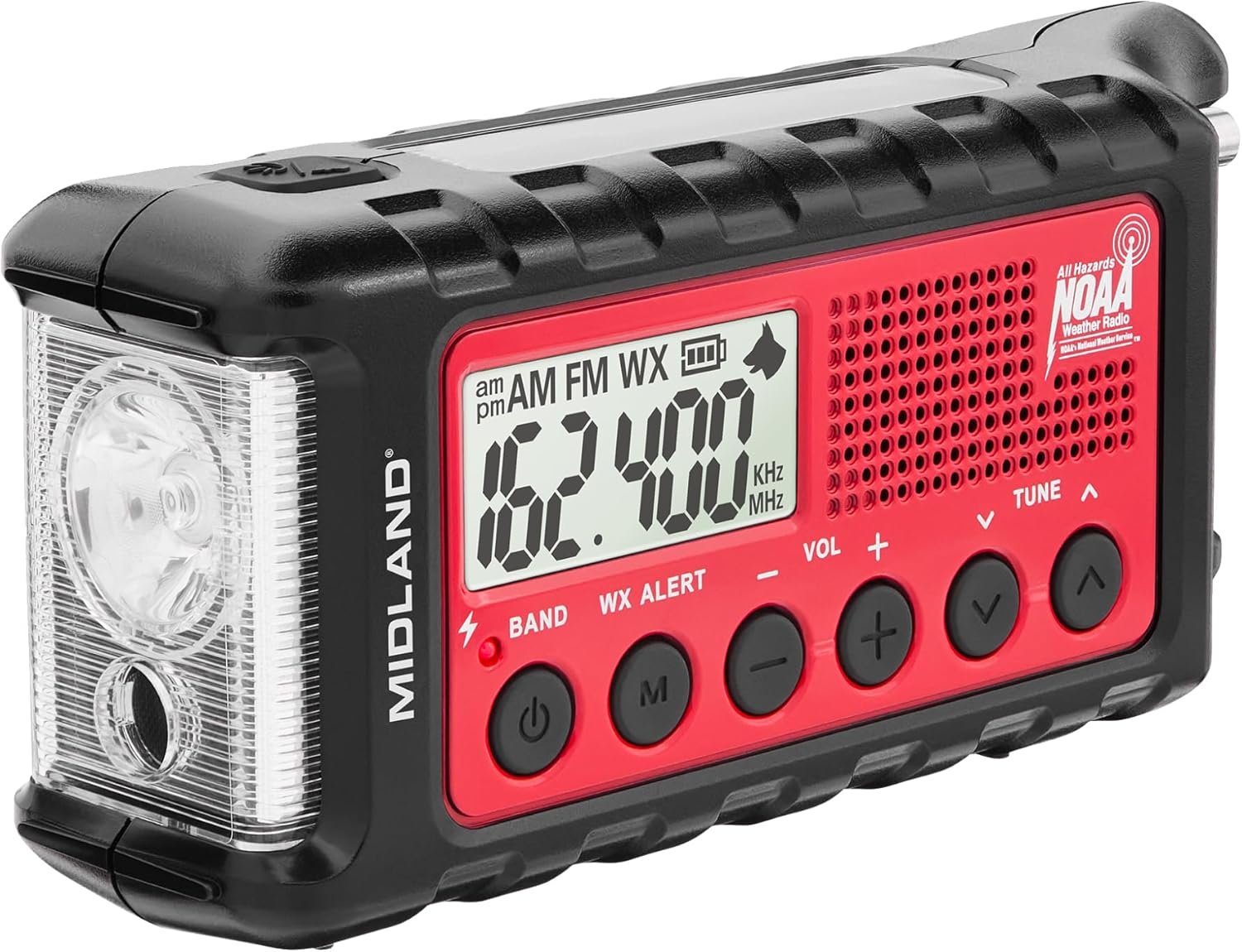
Midland ER310 Emergency Weather Radio
- Multi-Power: Hand crank, solar, USB, and backup battery
- Flashlight & SOS: 130-lumen LED beacon, Morse code signal
- Weather Alerts: NOAA scan + emergency alarm
Water Filter
Sawyer MINI compact and reliable, especially if water service goes down post-storm.
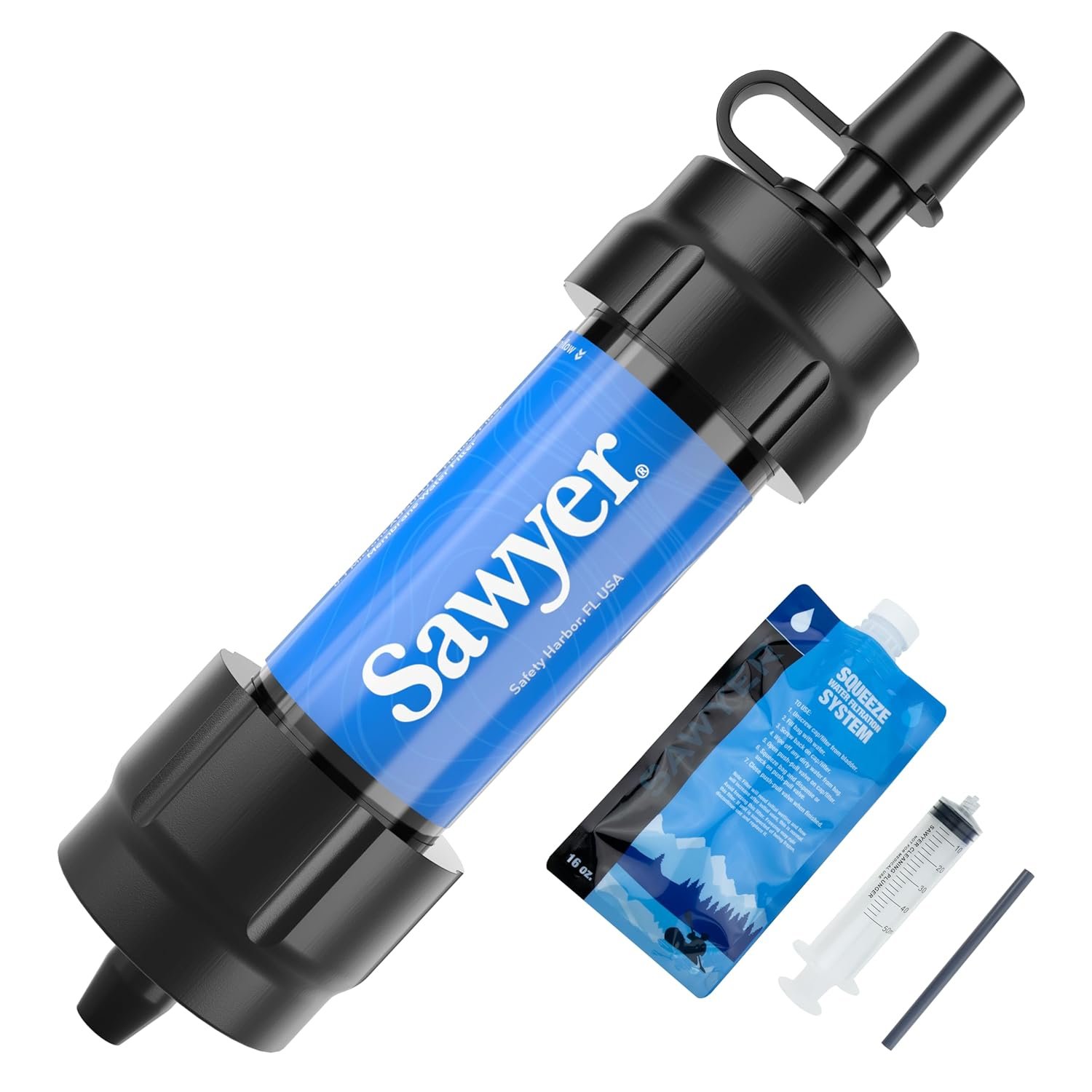
Sawyer MINI – Emergency Water Filter
- Removes: 99.99999% bacteria and 100% microplastics
- Includes: Filter, 16oz pouch, straw, cleaning plunger
- Ultra Flexible: Use with bottle, pouch, straw, or hydration pack
- Rechargeable Headlamps: Easier than flashlights when your hands are full.
Rechargeable Headlamps
Easier than flashlights when your hands are full.
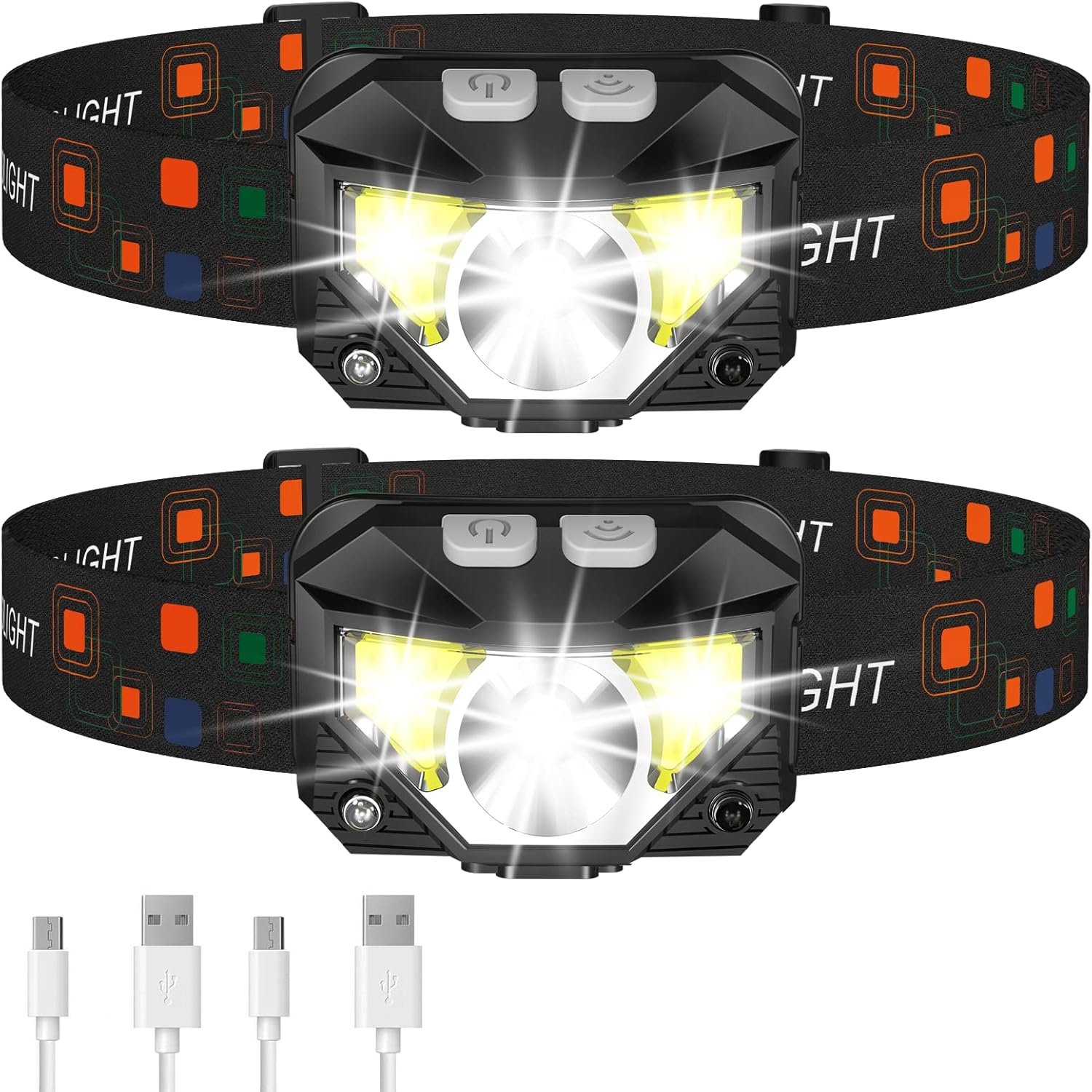
LHKNL Rechargeable Headlamp – 2 Pack
- Super Bright: 2x brighter lumen w/ 1500mAh rechargeable battery
- Hands-Free: Motion sensor & 60° tilt adjust
- Waterproof: IPX4 · 8 light modes · Ultra-light design
Battery Organizer
I use a clear case labeled by type (AA, AAA, D, etc.) to avoid searching during a blackout.
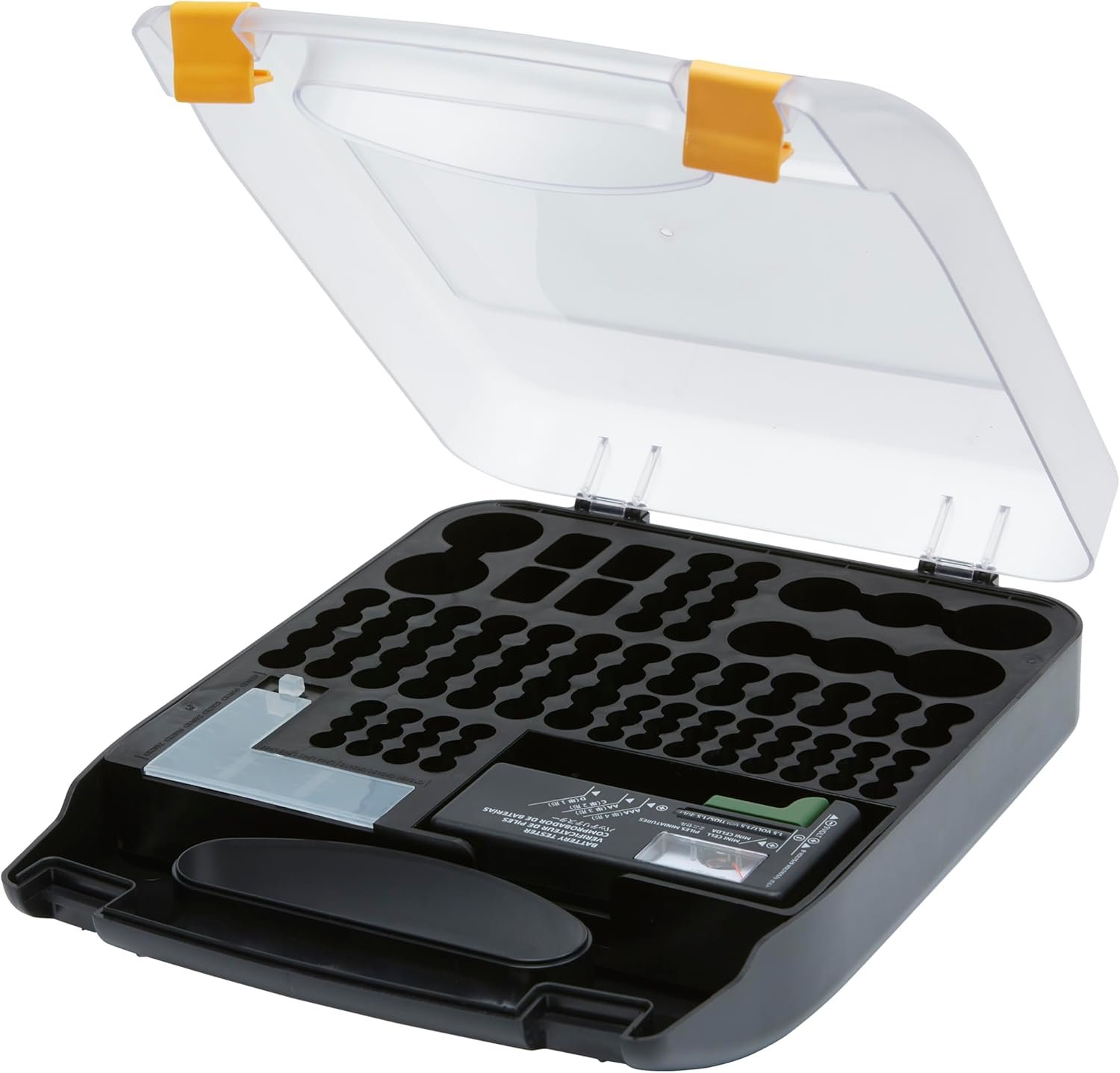
Amazon Basics Battery Organizer (110 Slots)
- Holds: 110 batteries – AA, AAA, C, D, 9V, coin cells
- Includes: Battery tester · Portable handle · Clear lid
- Mountable: Use flat or hang on wall for quick access
Weatherproof Binder
For storing ID copies, insurance, pet records, and emergency plans.

Fireproof Zippered Binder – 1.5″ D Rings
- Certified: Fireproof to 2000°F & SGS VTM-0 rated
- Fits: 375 sheets · A4 & 8.5×11″ · Page protector-ready
- Features: Zipper seal · Mesh pouch · Pen holders
I keep all of these tools in a dedicated tote labeled “GO FIRST” and review it every hurricane season. Want the full breakdown? Check out my complete Florida Hurricane Emergency Kit with gear links, photos, and product reviews. Every tool I’ve listed here plays a direct role in making my Florida Hurricane Preparedness Plan truly reliable.
How I Keep Kids and Pets Calm During a Hurricane
I’ll be honest no matter how calm you are, your kids and pets will feed off your energy. During a storm, keeping them comfortable is just as important as boarding the windows. Over the years, I’ve developed a few habits that work wonders for stress control.
For kids, I build what we call our “Storm Box.” It’s full of coloring books, glow sticks, story cards, and puzzles that don’t need batteries. I let them decorate it ahead of the season so they feel some control over the process. The box only comes out during hurricanes, which makes it feel special.
Pets get a similar setup. I pack a soft-sided crate, food for seven days, vet records, and a calming pheromone spray. I also freeze extra ice packs to keep pet food cool if power is out.
Most importantly, I keep a calm, confident tone. I talk about hurricanes like we would a rainy weekend serious but manageable. When your family sees you steady, they stay steady too. That calm, confident energy is a pillar of my Florida Hurricane Preparedness Plan.
My Evacuation Go-Bag Checklist (Built for Speed)
When I pack my go-bag, I don’t just throw in random items the night before. This is something I’ve refined over several hurricane seasons. My goal is to survive comfortably for 72 hours with minimal gear and without relying on others.
I keep my bag in the hallway closet, packed and ready from June to November. It includes:
- 3 days of non-perishable food (MREs, protein bars)
- 1 collapsible water container + purification tablets
- Basic first aid kit + backup meds
- Portable phone charger + cords
- Flashlight + headlamp + batteries
- Copies of ID, insurance, and pet records (laminated)
- Multi-tool, duct tape, and emergency blanket
- Cash in small bills + spare keys
- Toiletries + sanitation wipes + masks
- Spare shirt, socks, and rain poncho
For kids and pets, I keep a smaller secondary bag: comfort items, vet meds, travel bowls, and calming sprays. When we need to leave fast, this setup saves time and reduces stress it’s all ready to go, no second-guessing. It’s another reason my Florida Hurricane Preparedness Plan stays efficient, tested, and ready at a moment’s notice.
The Biggest Mistakes I’ve Seen People Make
Watching a hurricane approach is stressful but panicking leads to some common and costly errors. I’ve seen it all, and I’ve made a few of these myself in the early years. These are the top mistakes I warn my neighbors and friends about.
- Waiting too long to prep: Once the shelves are empty, it’s too late. I always aim to beat the rush.
- Forgetting gas and cash: ATMs and card readers often go down first. Fuel stations run dry quickly.
- Underestimating flood risks: Even if you’re not in a flood zone, 10 inches of rain can find its way inside.
- Using candles instead of lanterns: Fire hazards increase when winds break windows or cause gas leaks.
- Not securing outdoor gear: Patio furniture, grills, and trash bins become airborne missiles.
- Over-relying on your phone: Without a power bank or solar charger, your phone is just a paperweight.
These lessons cost people thousands of dollars and a lot of heartache. The good news? Every one of them is avoidable with the right prep and a calm plan. That’s what this guide is all about. It’s those avoidable risks that inspired me to create my own Florida Hurricane Preparedness Plan.
How My Local Community Helps Us Recover Faster
One thing I’ve learned? You can have all the gear in the world, but without community, recovery is 10 times harder. After Hurricane Michael, it wasn’t FEMA that showed up first it was neighbors. That’s why I stay involved and connected year-round.
I’m part of a local neighborhood text group where we share updates, generator access, extra ice, or who has fuel. We check in on elderly residents and make sure no one’s left without basics. It’s fast, informal, and life-saving.
I also keep the numbers for:
- Local shelters (including pet-friendly ones)
- County Emergency Operations Center
- Nearby churches and nonprofits that offer food or cooling stations
- Storm cleanup crews and certified tree removal teams
If you’re not already part of a neighborhood group, consider creating one. It could be a WhatsApp thread, Facebook group, or even a paper sign-up. It’s easy to overlook in calm weather but it’s the first thing you’ll wish you had when the grid goes down. Neighborhood collaboration like this is a central element of my Florida Hurricane Preparedness Plan.
Staying Ready Year-Round with a Florida Hurricane Preparedness Plan
Hurricane season may run from June to November, but I prepare in February. Why? Because that’s when I can find deals on gear, supplies, and home upgrades and I’m not competing with last-minute shoppers.
Here’s my year-round rhythm:
- Spring: Inventory the emergency kit, replace expired food or meds, inspect the roof, service the generator.
- Early Summer: Run a mock drill test backup power, recharge batteries, review evacuation routes.
- Mid-Season: Restock supplies after any storms. Adjust plans based on family, medical, or work changes.
- Fall: Check for mold or damage in gear storage. Safely store unused hurricane panels and anchor tools.
- Winter: Reflect and reset. What worked? What didn’t? What could improve for next year?
Treating hurricane prep as a lifestyle not a panic response has made all the difference. I stay ahead, avoid shortages, and feel more confident every season. That steady rhythm is the foundation of my Florida Hurricane Preparedness Plan.
Interactive Tools to Enhance Your Plan
Beyond reading tips and checklists, these interactive tools give you real‑time feedback, personalized insights, and a ready‑to‑shop gear list—all designed to strengthen your Florida Hurricane Preparedness Plan.
⚡ Emergency Blackout Readiness Quiz
Answer a few questions to discover missing items in your emergency kit and get a tailored shopping checklist when you’re done.
✅ Storm Prep Interactive Checklist
Walk through your home and storm‑proof setup with this customizable checklist you can check off in real time.
My Go-To Florida Hurricane Preparedness Plan Resources
You don’t have to do this alone and you don’t have to Google your way through every step. Over the years, I’ve bookmarked and used these trusted sites, guides, and alerts to stay informed and one step ahead.
- Florida Division of Emergency Management — Real-time updates, zone lookups, and local shelter information.
- National Hurricane Center — Storm forecasts, trajectory models, and safety alerts.
- Ready.gov Hurricanes Guide — Printable checklists and evacuation planning tools.
- The Weather Channel — For regional radar and local advisories.
- My Florida Hurricane Emergency Kit — Everything I personally recommend and keep stocked.
I suggest bookmarking these now and creating a “Storm” folder in your browser. When time is tight and the storm is coming, quick access matters. I keep these close at hand to support the broader steps outlined in my Florida Hurricane Preparedness Plan.
Why You Should Start Preparing Today
I say this with all the urgency and respect I can offer don’t wait. The worst feeling during hurricane season is realizing you’re not ready and the stores are already empty. Even a little prep today can prevent a lot of panic tomorrow.
Think of it like this: You’re not just protecting your home. You’re protecting your family’s sense of safety, your own peace of mind, and your ability to bounce back faster. Florida hurricanes aren’t a question of “if” they’re a matter of “when.”
Start simple. Build your kit. Map your plan. Test your backup power. You’ll be amazed how much calmer you feel just knowing you’re one step ahead.
If you want to skip the guesswork, my entire emergency kit guide is ready and waiting. Use what you need, ignore what you don’t, and build the system that works for you. That’s the beauty of a personalized Florida Hurricane Preparedness Plan it evolves with you.
Florida Hurricane Preparedness Plan
This entire guide is built from my own Florida Hurricane Preparedness Plan a system I’ve refined over years of real storms, real power outages, and real recovery. It’s not perfect, but it works. And most importantly, it adapts.
Whether you’re a new homeowner, a long-time Floridian, or just passing through during storm season, I hope this has helped you feel more in control. That’s exactly who this Florida Hurricane Preparedness Plan was built for real people in real Florida neighborhoods. My plan revolves around five pillars:
- Gear: Reliable, tested equipment stored where it matters.
- Power: Multiple energy backups that don’t rely on fuel.
- Evacuation: Clear, practiced routes and go-bags ready.
- Communication: Off-grid and digital backups.
- Community: Strong neighborhood ties and trusted info sources.
This is more than just prep it’s peace of mind. My Florida Hurricane Preparedness Plan has saved time, money, and stress. Use it. Improve it. Make it your own. At the end of the day, a strong Florida Hurricane Preparedness Plan gives you peace of mind, quicker recovery, and fewer surprises when a storm is on the way.
Frequently Asked Questions
What should I do if I can’t evacuate during a hurricane?
If you must shelter in place, pick a small interior room with no windows. My Florida Hurricane Preparedness Plan includes this scenario, so make sure you have supplies for at least 72 hours, keep your phone charged, and avoid using candles. Let someone outside your area know you’re staying.
What’s the most important item in a hurricane emergency kit?
Water. You can go days without power, but not without clean water. The Florida Hurricane Preparedness Plan I follow recommends at least one gallon per person per day for three days, plus a water purification method.
When should I board up my windows?
Ideally 48 to 36 hours before landfall. Don’t wait until the last minute — supplies sell out fast. My Florida Hurricane Preparedness Plan includes pre-cut, labeled plywood stored in advance for every window and door.
Is a generator worth the investment in Florida?
Absolutely. Whether gas or solar, backup power gives you comfort and safety. I highlight this step in the Florida Hurricane Preparedness Plan because staying powered during a storm isn’t a luxury — it’s a lifeline.
How do I know if I’m in a flood zone?
Use the FEMA Flood Map Service or contact your local planning department. My Florida Hurricane Preparedness Plan includes checking your flood designation every spring and documenting elevation levels.
How do I keep pets calm during a storm?
Use pheromone sprays, play calming music, and keep them in familiar crates or safe spaces. The Florida Hurricane Preparedness Plan I use includes pet go-bags, vet records, and a 7-day supply of food and meds packed early in the season.
Can renters follow a Florida Hurricane Preparedness Plan?
Definitely. Whether you rent or own, this Florida Hurricane Preparedness Plan has flexible steps for securing apartments, condos, and mobile homes. Your safety plan should adapt to your living space.
Final Thoughts on Hurricane Season Preparedness
I’ve lived through more Florida storms than I can count. Some were barely a breeze. Others shook the foundation of everything I own. But through them all, one thing stayed consistent the better prepared I was, the better we got through it.
A Florida Hurricane Preparedness Plan isn’t something you create in a panic. It’s a lifestyle. It’s something you build, test, and improve each year. Whether you start with a go-bag or a backup generator, just starting is what matters most.
This guide is your blueprint. But more than that, it’s your permission to take control of something most people wait too long to handle. Let’s stop reacting. Let’s start preparing with confidence, clarity, and a community that’s got your back. This is the mindset that shaped my Florida Hurricane Preparedness Plan and it can shape yours too.
Ready to go deeper? Explore these resources to finish your setup:
- Florida Hurricane Emergency Prep Quiz — My full gear checklist with recommendations
- Solar Generator Comparison — A side-by-side breakdown of the best backup power options
- Florida Disaster Resources — Official updates and alerts
- NOAA Hurricane Center — Real-time tracking and warnings
